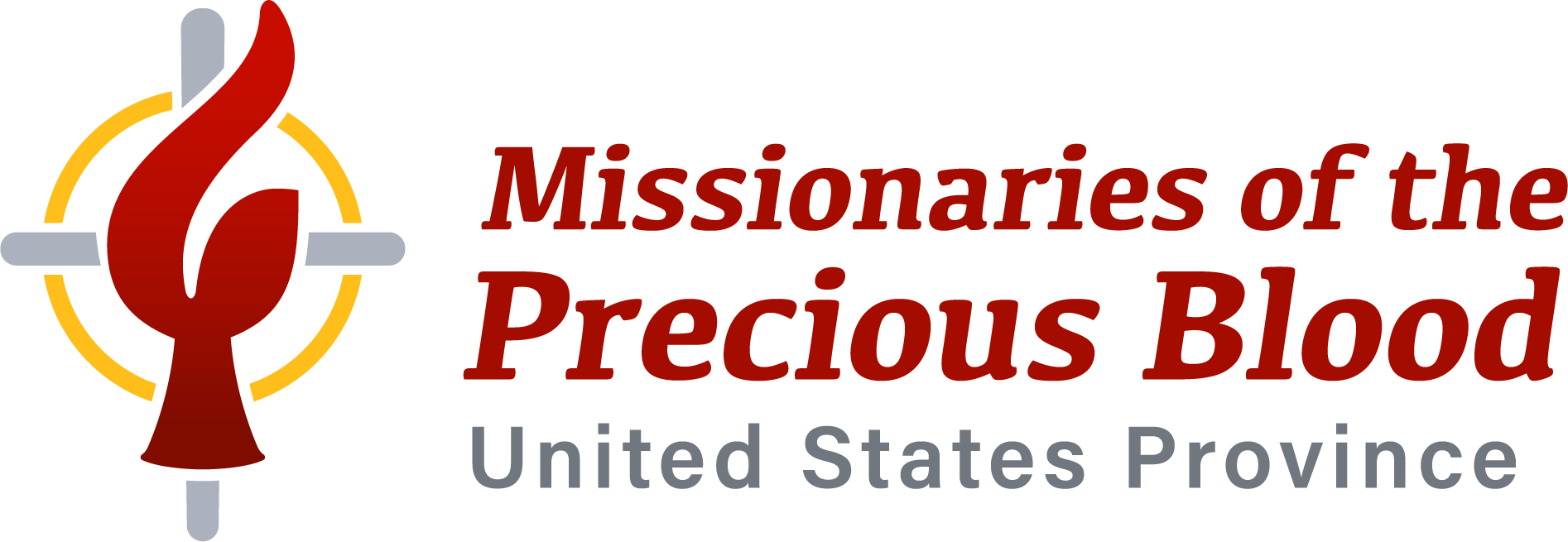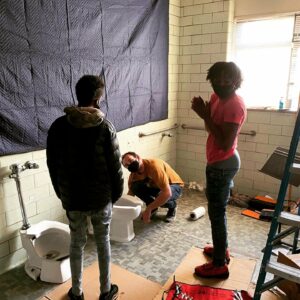Jul 19, 2021
We are excited to introduce the three new Precious Blood Volunteers! Over the next few days you’ll get to meet Aaron, Raechel, and Vincent at preciousbloodvolunteers.org.
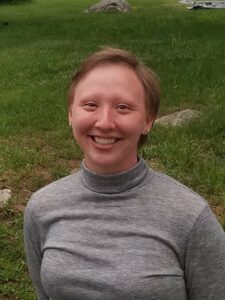
2021-2022 Precious Blood Volunteer, Raechel Kiesel
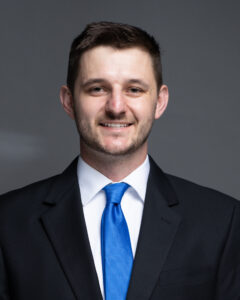
2021-2022 Precious Blood Volunteer, Vincent Tedford
Raechel Kiesel and Vincent Tedford will be serving at Precious Blood Ministry of Reconciliation in Chicago, Illinois. Raechel continues a tradition of University of Notre Dame alumni who have served with us. She comes from Indiana. Vincent graduated from Texas A&M University. He is the first graduate of Texas A&M to serve as a Precious Blood Volunteer, and our third volunteer from Texas.
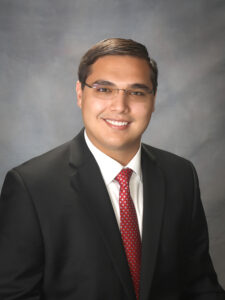
2021-2022 Precious Blood Volunteer, Aaron Wise
Aaron Wise will be serving at KC CARE Health Center in Kansas City, Missouri. Aaron is our first volunteer from Case Western Reserve University. He continues in a long line of volunteers from the great state of Ohio.
Three volunteers from our previous batch lived in intentional Catholic communities in Chicago and Kansas City. This worked out well providing them places to share common life with people their own age. We are continuing with this for the 2021-2022 volunteer year. Raechel and Vincent will be living at Hope House, which is part of Port Ministries, in the Back of the Yards neighborhood in Chicago. Aaron will be living in community at Jerusalem Farm in Kansas City, deepening the long-term relationship the Kansas City Province has had with Jerusalem Farm.
They will begin their service next week during Orientation. Orientation begins on Monday, July 26 at Precious Blood Renewal Center in Liberty, Missouri. Please keep our new volunteers in your prayers.
To learn more about how you can grow in your faith by walking with others go to preciousbloodvolunteers.org.
Jul 24, 2020
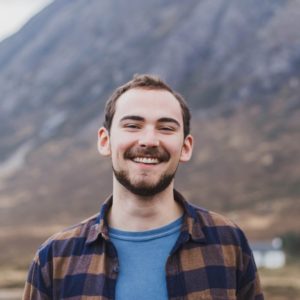
2020-2021 Precious Blood Volunteer, Thomas Weiss
Thomas Weiss will be serving as a Precious Blood Volunteer at Precious Blood Ministry of Reconciliation in Chicago, Illinois. He grew up in St. Louis, Missouri, and graduated from the University of Notre Dame with a degree in the Program of Liberal Studies, Notre Dame’s Great Books education.
Why do you want to volunteer?
“The most formative experience of my education was the summer service program I completed after my sophomore year at Notre Dame. Living in intentional community at Hope House and serving at PBMR will hopefully be an equally illuminating and restorative experience for me.”
Why do you want to volunteer with Precious Blood Volunteers?
“The values of Precious Blood Volunteers outline the kind of life I hope to live. Commitment to serving those from suffering communities and a drive to redevelop often backward social systems resonate with the direction of my heart as I transition out of college and toward a career informed by Christ’s message of peace and compassion.”
What are you looking forward to about your volunteer experience?
“I am excited to step out of the classroom and into the real world. Having spent four years mostly reading books and writing essays, I am thrilled to have the opportunity to put my ideals into practice and to learn to sharpen my understanding of social realities through first-hand experience with those living on the south side of Chicago.”
Learn more about Precious Blood Volunteers at preciousbloodvolunteers.org.
May 1, 2019
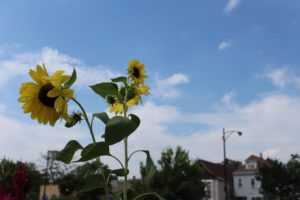
by Steven Dougherty, Precious Blood Volunteer
Steven Dougherty is a Precious Blood Volunteer serving at Precious Blood Ministry of Reconciliation (PBMR) in Chicago, Illinois. In the three reflections below, Steven paints pictures of hope he has encountered while working there.
My second week in Chicago was one of the most violent in recent history. Waiting for the bus, I saw a man and a woman talking. They spoke slowly. The air was thick and hot. As she was leaving, the woman leaned in and hugged the man. Then she held him for a moment at arm’s length. She looked him in the eyes, and with worry in her throat she said, “Be safe.” Her words, thick in the hot air. They were desperate wounded words, heavy with fear. This was a command, a salutation, a wish—something impossible, or at least it seemed so at the time. So many people had died. Then she let the man go, freeing him from her temporary protection, hoping her wish would be enough. I thought it was beautiful how much she cared for this man, how well they must have known each other. Then the woman came to me and did the same!
****
In my months of volunteering at PBMR I have witnessed struggle, I have witnessed pain, and I have witnessed loss. I have been asked many times about hope. How can I stay hopeful doing the work I do at PBMR? I struggle with this, because finding hope feels like a privilege. If I say that I have hope that this community I work in will be revitalized and not gentrified, if I say that I hope the people we help can get jobs and will be treated fairly, or if I say that I hope people will stop dying so young, I am doing so only for myself. I think these things because at the end of the day I am tired. I have done what I know I can do, and the rest seems impossible, so I hope. I am not saying this is a bad thing, only that is not the thing I want it to be. Access to hope has become a privilege. It has become a way of distancing ourselves from the responsibility of the world’s problems. Hope for things to get better keeps things the way they are.
But there is another side to all of this, because hope does not have to be something that is stagnant. Hope can move through us and into others. When this happens, when hope draws us together, there is power—power for real change in the world. When people work together with a united vision of hope, when they know exactly what they want to accomplish, hope can be actualized. We can reach out with hope and work together to make sure that everything will be okay, and although it is hard, we do this work anyway.
In my months of volunteering at PBMR I have also witnessed this: a new kind of hope—a hope that does things in the world. It is a hope that people share with strangers. It is mixed with fear and pain, but it is strong enough to overcome them both. Since it was given to me by the woman at the bus stop, I have seen it all over Chicago, I have even used it myself: “Be safe.” There is so much behind these words. They carry a message that you are cared for, and they carry a promise that although there is so much danger that I cannot solve, you have my protection. Anytime someone leaves the Center you hear all of this. Everyone is not always safe. In fact, our participants are rarely safe—but will still hope. We believe the impossible and together we make it a little more possible.
****
The man in front of you seems old but you know that time does not pass here as it does elsewhere, so in the letter to your friend you will call him worn. He is asleep. He has been asleep since you got on the bus, and since you got on the bus, the bus has filled with heat and pressure.
In the letter to your friend you will compare it to the sun—the bus—and now it grows loud. A child begins to scream. The heat and the pressure move through your spine and you feel beyond heavy—you feel worn.
You cannot make out the words of the child. In the letter to your friend the back of the bus will be another world, one that is burning in its closeness to the sun. All you hear is longing. Longing that makes you think to write a letter to your friend. Longing to be heard: the painful pulling apart of a body from its limbs. In the letter, you will call it gun violence in Chicago. The man in front of you who you will call worn, but who you know is old for this bus and the violence, whispers with his eyes still closed, “Hey now, it’s gonna be okay.” You are not sure who he means to say it to, the child or himself. In the letter to your friend he will say it to everyone because “it” is a delicate thing: the bus and the child and your spine and Chicago, but you believe him anyway.
Steven is a current Precious Blood Volunteer serving at Precious Blood Ministry of Reconciliation in Chicago.
To learn more about becoming a Precious Blood Volunteer go to www.preciousbloodvolunteers.org
This article originally appeared in the May 2019 edition of the New Wine Press.
Mar 1, 2018

by Leah Landry, current Precious Blood Volunteer
The women of PBMR. Not a phrase you hear often at a Center started by four priests as a safe haven for young men. But over the past few years, the women in the neighborhood have become vital members of the PBMR community. On Saturday, February 3, these women gathered together to christen the new Mother Brunner House – the Women’s Center – with a mural that depicts the strength, serenity, and power of the women of PBMR.
The project included women from three programs at PBMR: the women of the advocacy group Community and Relatives of Illinois’ Incarcerated Children (CRIIC), the women from the Mothers’ Healing Circles who have lost children to incarceration and gun violence, and the Young Women’s Group, the newest program for women.
With the help and direction of PBMR’s teaching artist, Alberto Alaniz, the women gave suggestions of the words and images that come to mind when they think of the women of PBMR. The answers were as varied as the women themselves: unity, strength, love, hearts and stars, peace signs, mother and child. Then representatives from each program consulted with Alberto and together the group came up with the image for the wall. A few weeks later, over 20 women gathered at the Mother Brunner House to paint in the image.
You’d think a room full of 20 women, ranging from ages 6 to 80, painting a huge space with lots of color would be a chaotic scene, but the space had a peaceful, collaborative, and happy feel.
 Mrs. Wingard, the eldest and wisest in the group and a member of CRIIC, shared her reflections on the day: “Just to remember that I put a paintbrush on the wall and Fr. Kelly and Julie and Sr. Donna are gonna walk through there and see the mural and I thought ‘Wow, I really feel a part of that’…And then to think about them getting the house and putting something on the wall that actually reaches out to the community. [The mural] shows families coming together and it’s not just one ethnicity. It’s not just black, not just white, not just latino: it’s everyone coming together for a common cause, for our children, for our community.”
Mrs. Wingard, the eldest and wisest in the group and a member of CRIIC, shared her reflections on the day: “Just to remember that I put a paintbrush on the wall and Fr. Kelly and Julie and Sr. Donna are gonna walk through there and see the mural and I thought ‘Wow, I really feel a part of that’…And then to think about them getting the house and putting something on the wall that actually reaches out to the community. [The mural] shows families coming together and it’s not just one ethnicity. It’s not just black, not just white, not just latino: it’s everyone coming together for a common cause, for our children, for our community.”
Shumeka Taylor, a representative of the Young Women’s Group, said that putting the handprints and quotes on the wall was her favorite part. “The hands was so nice. We all who had been doing the part of the wall and engraving our names and a nice quote and that’s something that’s going to live forever in the house and I like that.” Shumeka added “From the older women to the young women, I truly enjoyed it. The older lady put the French braid in my hair while I painted the rest of the mural because they didn’t want paint to get in my 26 inches. I greatly appreciated everything that went on that day.”
Aldena Brown, a member of the Mothers’ Healing Circles, felt Helen Keller’s quote “Alone we can do so little. Together we can do so much” captured the essence of the day. “That day of the painting felt good. Everyone working together, good laughs, music, and food! That moment was like nothing mattered. Painting that mural was everything, just being a part of something so meaningful. That gave my heart joy and peace in that moment. My mind drifted to a great place pushing that paintbrush. Yes, I must say that will be a day I’ll never forget! I was a part of that painting coming to life! I’m very thankful!”
 The women of PBMR are leaving their legacy all over PBMR and the neighborhood, from the relationships they make to the steps they take towards their goals to the beautiful mural that will greet all the visitors of the Center. From now on, every person who walks through the doors of the Mother Brunner House will know that the women in the community are an integral part of PBMR: strong, unified, and here to stay.
The women of PBMR are leaving their legacy all over PBMR and the neighborhood, from the relationships they make to the steps they take towards their goals to the beautiful mural that will greet all the visitors of the Center. From now on, every person who walks through the doors of the Mother Brunner House will know that the women in the community are an integral part of PBMR: strong, unified, and here to stay.
You can learn more about serving as a Precious Blood Volunteer by going to www.preciousbloodvolunteers.org
You can learn more about our placement at Precious Blood Ministry of Reconciliation by going to https://preciousbloodkc.org/precious-blood-ministry-of-reconciliation/



